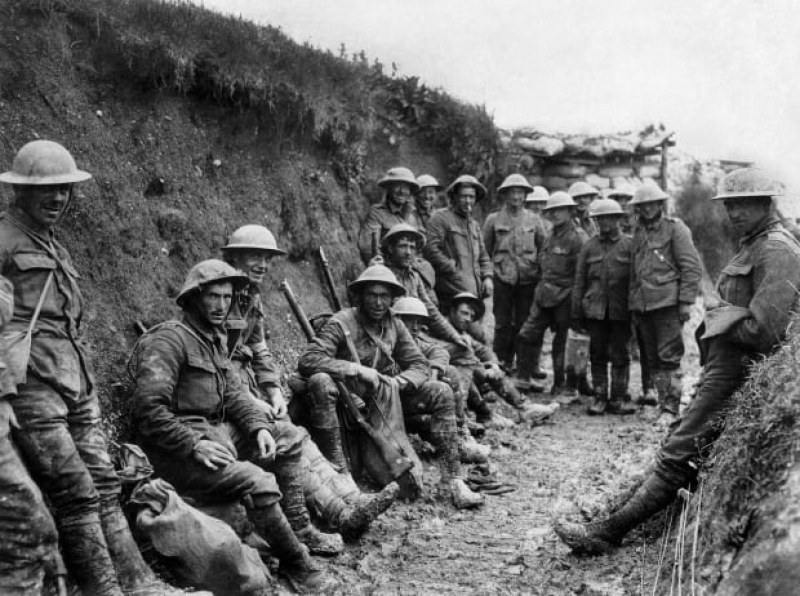1918. The end of the First World War. Germany declared capitulation and signed a truce with the Entente in a railroad car near the French city of Compiegne. The war officially stopped at 11.00 (the eleventh hour of the eleventh day of the eleventh month).
For the Entente, the document is signed by Marshal Ferdinand Foch, head of the Allied Command, and on the German side by Matthias Erzberger, a representative of the remnants of government in Germany.
Reconciliation talks have been going on since early November, when it became clear in Berlin that the Central Powers had lost the war and that the German allies had surrendered one by one.
On November 7, German Commander-in-Chief Paul von Hindenburg sent a telegram to Foch requesting a meeting. He is in a hurry to settle the truce, as a revolution is simmering in Germany and Munich, Berlin and other cities are on the brink of rebellion. The German delegation crossed the five-car front line through the devastated areas of northern France to reach Compiègne, where Foch was waiting for them.
During the three-day negotiations, he appeared only twice – first to ask the Germans what their demands were, and finally to sign the contract. In fact, there are no real negotiations, and only a few of the German demands have been accepted. They were even further pressured by the news that Kaiser Wilhelm II had abdicated. Erzberger extended the negotiations to the maximum pre-agreed deadline of 72 hours, but in the end, on the morning of November 11, he signed and the truce became a fact.
Surprising facts about British uniforms from the First World War
The First World War popularized the trench coat
The trench coat is a useful and practical piece of clothing worn at will by officers during the Great War (such as the British officer in the main image above). It comes from the overcoat, which turns out to be too heavy and uncomfortable in the humid conditions of the trenches.
These outer garments are made of a lighter but waterproof material to keep officers dry, and have large pockets for storing cards and documents. In addition, adjustable wrist straps prevent water from leaking into the sleeves while using binoculars.
Turbans are a common sight on the western front
During the First World War, the British colonies, especially India, made a huge contribution to the military effort, but it was often neglected. At the end of 1914, 1/3 of the British army fighting on the Western Front was from India, so Sikh soldiers wearing turbans were a common sight. But while this is a proud tradition, it often signals their “lower” colonial status among the military.
The yellow-brown color (khaki) for the uniform was first used in India
During World War I, he placed great emphasis on keeping soldiers hidden from the enemy instead of walking around in brightly colored uniforms. Thus, uniforms in today’s typical light brown color began to be used. These uniforms actually appeared in India much earlier, when Harry Lumsden led his Corps of Guides to the river in the late 1840s with a supply of white cloth purchased at the Lahore market. There the cloth is soaked with mud, which allows the troops to merge with their environment.
Britain imports khaki dyes from Germany
Ironically, the paint used in khaki uniforms was secretly imported from Germany during the First World War. Before the war, Germany was a leading producer of synthetic dyes and by 1913 exported more than 20 times more dyes than Britain.
The military must hire civilian uniform companies
Logistically, Britain is not prepared for war on such a scale. For the first few months, the Ministry of Defense had only enough uniforms to clothe existing servicemen and members of the Territorial Forces who were on the front line. However, the rapid recruitment of troops is overloading the military’s textile factories.
This problem has been solved by negotiating with civilian tailoring companies to produce uniforms on a huge scale; an agreement that benefits both the military and suppliers.
Officers who cannot afford a uniform are given benefits
At the beginning of the war, officers were usually recruited from the upper class and could easily pay for a new uniform. But as the war dragged on, the losses of these high-class servicemen forced the military to recruit from wider social classes.
However, many of them are unable to pay for their uniforms, so the British army subsidizes them to maintain enough recruits.
It is not surprising, however, that a gap is developing at the front between employees from different social classes.
Blue uniforms complement the brown ones
Supply problems caused by Germany’s brown dye monopoly are forcing Britain to look for other options. Thus, the Ministry of Defense began to supply the troops with everything it could. 500,000 blue postal service uniforms and 500,000 overcoats were used to alleviate the shortage. In addition, the Department of Defense also orders a huge amount of clothing from the United States.
Several poorer soldiers are dressed in scarlet and blue parade uniforms – not entirely inconspicuous. These “extraordinary” uniforms are collectively called “Kitchener blue” after Herbert Kitchener, a field marshal who became famous for his imperial campaigns and his important role in the early stages of the First World War.
Those who give up on their conscience are forced to wear uniforms against their will by force
After being called up for military service, conscientious objectors often refuse to wear the uniform. Because they are still considered soldiers, they can be punished by law and are usually subjected to violence and humiliation. It is not uncommon for those who refuse to be pressured and forcibly dressed.












